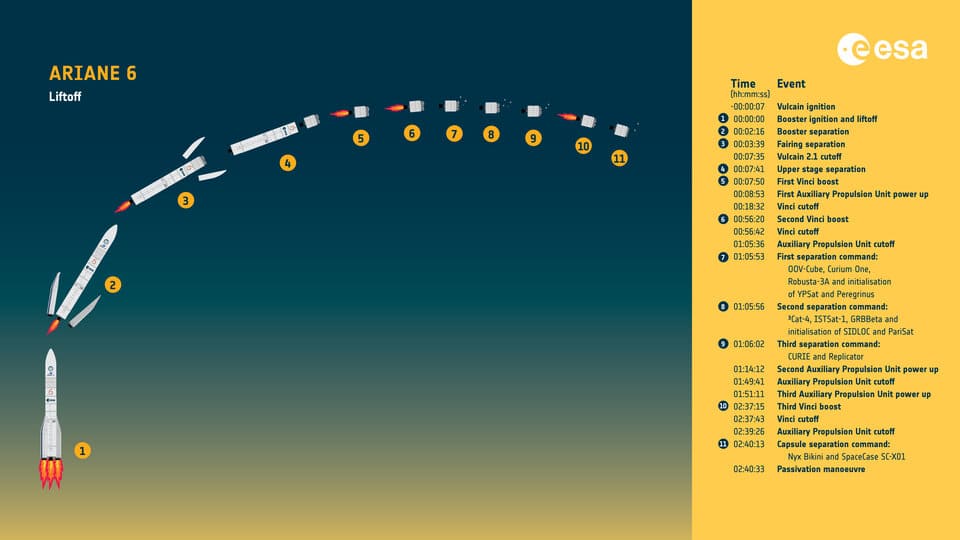The first launch of the European heavy rocket Ariane-6 took place. The rocket is to launch 17 payloads into Earth orbit and demonstrate the possibility of re-engaging the second stage engines. The launch was broadcast on the European Space Agency’s YouTube channel.
“Ariane 6” replaced the heavy Ariane 5 rocket, which has already been decommissioned. The new rocket took a decade to develop and its first launch has been repeatedly pushed back from 2020. The rocket’s first stage is powered by a Vulcain 2.1 engine, while the second stage is powered by a Vinci engine, both using a liquid oxygen-liquid hydrogen fuel pair.
Depending on the modification, the rocket is equipped with two (A62) or four (A64) solid-propellant side boosters. The payload capacity of the rocket in the most powerful configuration will be up to 11.5 tonnes of payload for the geo-transition orbit, up to 21.6 tonnes for the low reference orbit and up to 8.5 tonnes for the lunar transition trajectory.

On 9 July 2024, the Ariane 6 launch vehicle in a configuration with two side boosters made its first trip into space. The payload consists of 17 components: small satellites, two return capsules and several stationary experiments.
The second stage is expected to first enter an elliptical orbit of 300 by 700 kilometres and then, by re-engaging the engine, make it circular, with an altitude of 580 kilometres. The OOV-Cube, Curium One and Robusta-3A satellites will then be released and the YPSat and Peregrinus experiments will be activated. This will be followed by the deployment of the 3Cat-4, ISTSat and GRBBeta satellites and the SIDLOC and Parisat experiments. Finally, the CURIE and Replicator satellites will be deployed last. The return capsules will separate before the re-entry of the stage into the Earth’s atmosphere.













